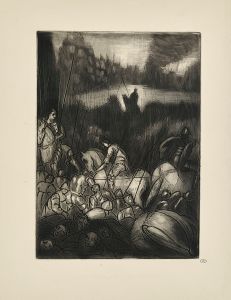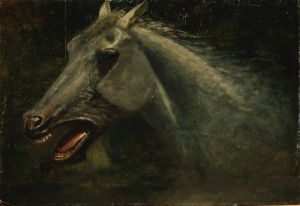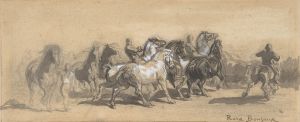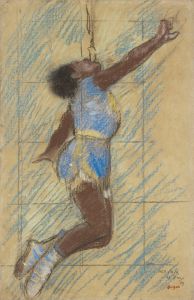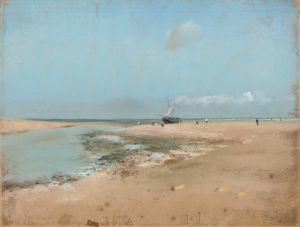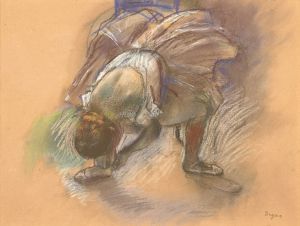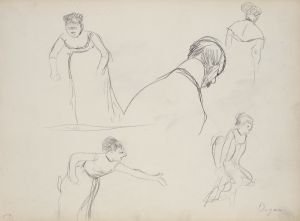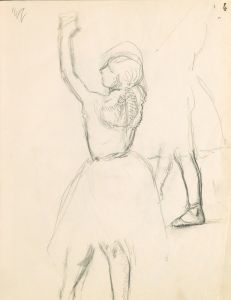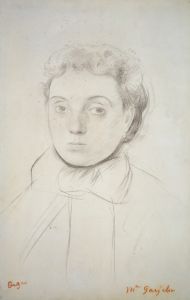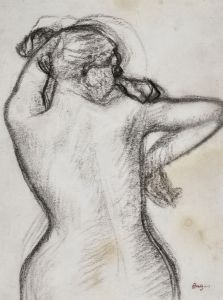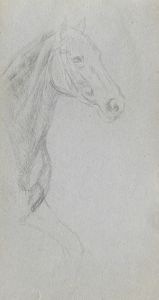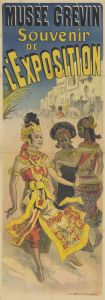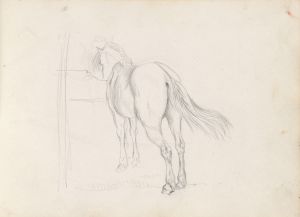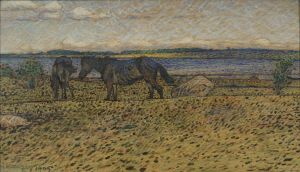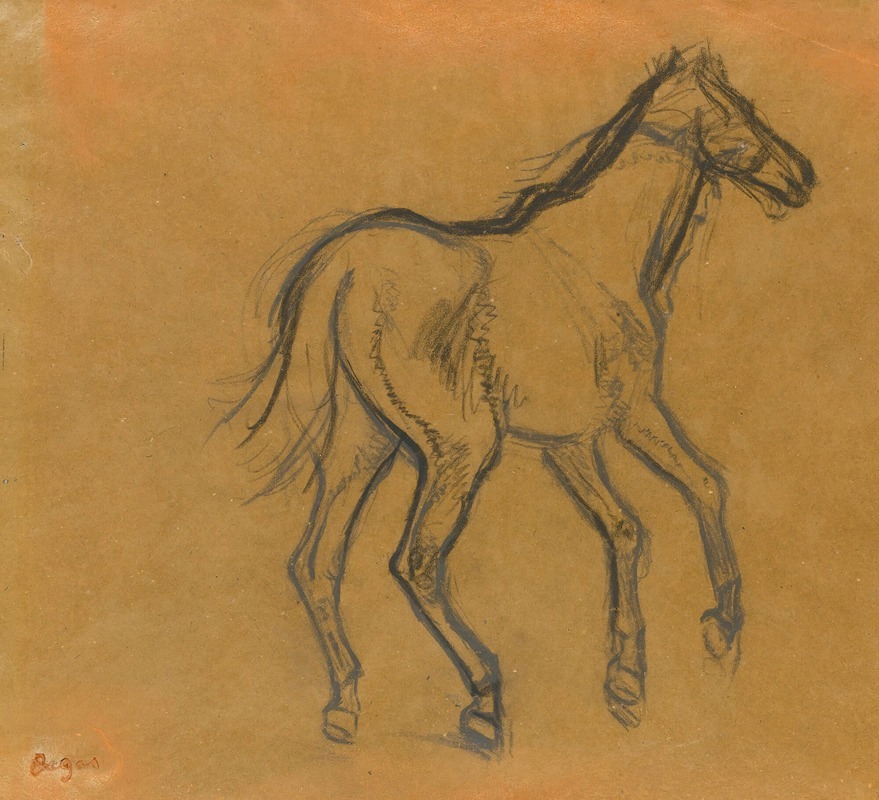
Étude De Cheval
A hand-painted replica of Edgar Degas’s masterpiece Étude De Cheval, meticulously crafted by professional artists to capture the true essence of the original. Each piece is created with museum-quality canvas and rare mineral pigments, carefully painted by experienced artists with delicate brushstrokes and rich, layered colors to perfectly recreate the texture of the original artwork. Unlike machine-printed reproductions, this hand-painted version brings the painting to life, infused with the artist’s emotions and skill in every stroke. Whether for personal collection or home decoration, it instantly elevates the artistic atmosphere of any space.
Edgar Degas, a prominent French artist associated with the Impressionist movement, is well-known for his masterful depictions of dancers, horse races, and everyday life in Paris. One of his lesser-known works, "Étude De Cheval" (Study of a Horse), showcases his keen interest in capturing movement and anatomy, particularly in equine subjects. Degas had a lifelong fascination with horses, which is evident in several of his works that explore the dynamic and graceful forms of these animals.
"Étude De Cheval" is a testament to Degas's dedication to understanding the anatomy and movement of horses. Although specific details about this particular study are limited, it is known that Degas often frequented racetracks and stables to observe horses in motion. His studies were not merely for artistic purposes but also reflected his scientific approach to understanding form and movement. Degas was influenced by the advent of photography and motion studies, such as those by Eadweard Muybridge, which provided new insights into the mechanics of movement.
In his equine studies, Degas employed various media, including pencil, ink, and pastels, to capture the fluidity and power of horses. His works often depict horses in various poses, from standing still to galloping, highlighting his ability to convey motion and emotion through line and form. Degas's attention to detail and his ability to capture the essence of his subjects are evident in these studies, which served as preparatory works for his larger compositions.
Degas's interest in horses was not limited to studies alone; he incorporated equine subjects into several of his paintings and sculptures. His works often depicted scenes from the racetrack, capturing the excitement and energy of horse racing. These compositions reflect his fascination with the interplay of light, movement, and form, which are hallmarks of his style.
While "Étude De Cheval" may not be as widely recognized as some of Degas's other works, it is an important piece that highlights his dedication to studying and understanding his subjects. It provides insight into his artistic process and his commitment to capturing the beauty and complexity of the natural world. Degas's equine studies continue to be appreciated for their technical skill and their ability to convey the grace and power of horses.
In summary, "Étude De Cheval" by Edgar Degas exemplifies the artist's interest in equine subjects and his commitment to capturing movement and anatomy. Although specific details about this particular study are scarce, it is part of a broader body of work that showcases Degas's fascination with horses and his ability to convey their dynamic forms through art.





